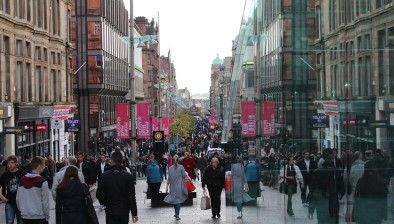Scotland’s population reaches record high
 Scotland’s population has grown to a record high of 5.37 million a result of increased migration, according to new figures.
Scotland’s population has grown to a record high of 5.37 million a result of increased migration, according to new figures.
An annual report by the National Records of Scotland found that there were about 5,373,000 people living north of the border in 2015, an increase of 25,400 from the previous year and the highest ever recorded.
The population is predicted to continue to grow until at least 2039.
In the year to 30 June 2015, a total of 85,000 people came to Scotland and 57,000 left, resulting in a net increase in population of 28,000. This gain compares to 17,600 in the previous year and is the highest net in-migration figure since the year to mid-2011.
Of those who came to Scotland, about 47,200 were from England, Wales and Northern Ireland while around 37,800 people arrived from overseas.
Over the same period, around 38,800 people left Scotland for the rest of the UK and about 18,200 left to go abroad.
Migrants tended to be younger than the general population, with a peak age for inward migration of 19 and peak ages for migration out of 23 and 24, reflecting students starting and completing higher education in Scotland.
Statisticians estimate that, based on past trends, the population of Scotland will rise by 7 per cent to 5.7 million by 2039, compared with 17 per cent for England, 10 per cent for Northern Ireland and six per cent for Wales.
The population is projected to grow older as life expectancy improves, with the number of people aged 75 and over increasing by 85 per cent, from 0.43 million in 2014 to 0.8 million in 2039.
The figures show that in 2015 there were 55,098 births registered in Scotland, 1,627 (2.9 per cent) fewer than in 2014, resuming a trend of decline.
Registrar general Tim Ellis said: “The population in 1855 was 2,978,065. This year’s figures show our population is still increasing, mostly due to migration, and in 2015 was at its highest ever at 5,373,000 people.
“The population is continuing to age and this change will bring both opportunities and challenges in the years ahead.
“As well as more people moving to Scotland than leaving, fewer babies were born during 2015 and there were more deaths than in 2014.
“Although mortality rates in Scotland have generally fallen more slowly than in the rest of the UK and elsewhere in Europe, the improvements over the last 60 years are still considerable and the impact is reflected in the increase in expectation of life.
“Despite these improvements, inequalities remain within Scotland. For example, males born around 2012 in the 10 per cent least deprived areas in Scotland could expect to live 12.5 years more than males born in the 10 per cent most deprived areas.”









